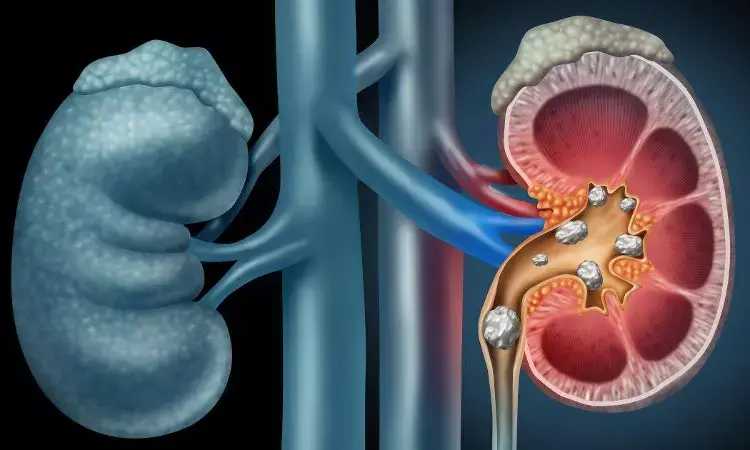- Home
- Medical news & Guidelines
- Anesthesiology
- Cardiology and CTVS
- Critical Care
- Dentistry
- Dermatology
- Diabetes and Endocrinology
- ENT
- Gastroenterology
- Medicine
- Nephrology
- Neurology
- Obstretics-Gynaecology
- Oncology
- Ophthalmology
- Orthopaedics
- Pediatrics-Neonatology
- Psychiatry
- Pulmonology
- Radiology
- Surgery
- Urology
- Laboratory Medicine
- Diet
- Nursing
- Paramedical
- Physiotherapy
- Health news
- Fact Check
- Bone Health Fact Check
- Brain Health Fact Check
- Cancer Related Fact Check
- Child Care Fact Check
- Dental and oral health fact check
- Diabetes and metabolic health fact check
- Diet and Nutrition Fact Check
- Eye and ENT Care Fact Check
- Fitness fact check
- Gut health fact check
- Heart health fact check
- Kidney health fact check
- Medical education fact check
- Men's health fact check
- Respiratory fact check
- Skin and hair care fact check
- Vaccine and Immunization fact check
- Women's health fact check
- AYUSH
- State News
- Andaman and Nicobar Islands
- Andhra Pradesh
- Arunachal Pradesh
- Assam
- Bihar
- Chandigarh
- Chattisgarh
- Dadra and Nagar Haveli
- Daman and Diu
- Delhi
- Goa
- Gujarat
- Haryana
- Himachal Pradesh
- Jammu & Kashmir
- Jharkhand
- Karnataka
- Kerala
- Ladakh
- Lakshadweep
- Madhya Pradesh
- Maharashtra
- Manipur
- Meghalaya
- Mizoram
- Nagaland
- Odisha
- Puducherry
- Punjab
- Rajasthan
- Sikkim
- Tamil Nadu
- Telangana
- Tripura
- Uttar Pradesh
- Uttrakhand
- West Bengal
- Medical Education
- Industry
Extracorporeal shock wave lithotripsy with ultrasound monitoring tied to higher stone-free rate

JAPAN: In patients with kidney stones, ultrasonography monitoring during extracorporeal shock wave lithotripsy may contribute to a higher stone-free rate, a study published in the International Journal of Urology has stated.
Treatment for symptomatic nephrolithiasis frequently involves extracorporeal shock wave lithotripsy. Ultrasound can help to diagnose and treat some of the complications that can arise from this surgery. Since the advent of extracorporeal shock wave lithotripsy for the non-invasive method of renal and ureteral stones removal, lithotripter systems have depended on either fluoroscopic or ultrasound stone localization. Radiolucent renal stones can be treated more easily and with less radiation exposure owing to ultrasound stone localization.
In the study, the authors assessed the effectiveness of monitoring with ultrasound during shock wave lithotripsy for kidney and proximal ureteral calculi.
In the proposed investigation, 535 individuals who first had shock wave lithotripsy for renal or proximal ureteral calculi between January 2012 and December 2021 were retrospectively evaluated which included 192 kidney stone cases and 162 proximal ureteral stone cases. Based on the techniques used to identify and evaluate calculi during shock wave lithotripsy, the patients were split into two groups: the ultrasound with X-ray group (n = 241) and the X-ray group (n = 294). There was a 1:1 ratio propensity score-based matching because the patient demographics varied. The stone-free rate served as the main endpoint.
Key findings of the study:
- The stone-free percentage for individuals with kidney stones was considerably higher in the ultrasound plus X-ray group than in the X-ray group (66.7% vs. 47.9%).
- The failure of shock wave lithotripsy was independently linked in the multivariate analysis with a massive stone area (odds ratio 2.37), smaller caliceal stones (odds ratio 3.37), and X-ray monitoring solely (odds ratio 0.49).
- There was no discernible difference between the ultrasound plus X-ray group and the X-ray group in terms of the percentage of patients with proximal ureteral stones who were stone-free (71.6% and 58.0%, respectively).
- High computed tomography attenuation (odds ratio 2.31), together with a big stone area (odds ratio 2.18) were independently linked to residual stones following shock wave lithotripsy.
The authors concluded that patients with kidney calculi may benefit more from ultrasound-assisted surveillance than those with proximal ureteral calculi in terms of their stone-free rate.
REFERENCE
Isogai M, Hamamoto S, Kawase K, Okada T, Hattori T, Chaya R, Hamakawa T, Sugino T, Taguchi K, Umemoto Y, Okada A, Yasui T. Efficacy of ultrasound monitoring during extracorporeal shock wave lithotripsy: A multi-institutional propensity score-matched study. Int J Urol. 2022 Jul 23. doi: 10.1111/iju.14984. Epub ahead of print. PMID: 35871263.
Dr Kamal Kant Kohli-MBBS, DTCD- a chest specialist with more than 30 years of practice and a flair for writing clinical articles, Dr Kamal Kant Kohli joined Medical Dialogues as a Chief Editor of Medical News. Besides writing articles, as an editor, he proofreads and verifies all the medical content published on Medical Dialogues including those coming from journals, studies,medical conferences,guidelines etc. Email: drkohli@medicaldialogues.in. Contact no. 011-43720751


